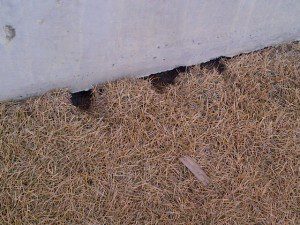Comprehensive Overview to Efficient Vole Bug Control: Invasion Identification and Treatment Approaches
In the realm of effective parasite control, vole invasions position a distinct challenge that requires a calculated approach. These tiny rats, typically mistaken for mice, can ruin gardens, lawns, and crops if left untreated. Recognizing the indicators of vole visibility and executing targeted treatment techniques are essential elements of a successful parasite management strategy. By exploring the subtleties of vole behavior, recognizing crucial indicators of problem, and examining an array of control alternatives, one can develop a comprehensive approach to fight these elusive parasites.
Recognizing Vole Actions
Vole habits is identified by their delving habits and rapid reproduction rates, making them a tough bug to regulate efficiently. Their quick reproductive rate more makes complex control initiatives, with women capable of generating multiple litters in a single year, each consisting of several children.
Voles are most energetic throughout the early morning and night hours, spending most of their time foraging for food. Their tunneling practices not only disturb yards and yards but likewise make them challenging to eliminate and spot. Comprehending vole behavior is essential for efficient pest control approaches. By determining their burrow areas, checking feeding areas, and applying targeted control techniques, such as capturing or habitat adjustment, vole infestations can be taken care of effectively.
Indications of Vole Invasion

Prevention Approaches
Implementing reliable avoidance techniques is vital in minimizing vole invasions and safeguarding plants from their destructive feeding practices. To prevent vole problems, it is crucial to begin by eliminating prospective food resources and sanctuary.
Consistently examining the home for indications of vole task, get more such as runways and delve openings, is vital for early discovery and prompt activity. Consider making use of repellents or catches tactically put near their paths if vole task is believed. Using all-natural killers like owls or snakes can also aid keep vole populaces in check. By executing a mix of these prevention strategies, garden enthusiasts and house owners can efficiently secure their vegetation from vole damage.
Non-Lethal Control Approaches
To properly take care of vole populaces while focusing on humane methods, non-lethal control techniques supply sensible remedies for decreasing vole damage in gardens and landscapes. These barriers can be hidden at the very least 12 inches bent and deep at a 90-degree angle to stop voles from burrowing below.

Lethal Control Options
One effective technique for addressing vole problems in landscapes and gardens includes the strategic use lethal control alternatives. When confronted with an extreme vole problem that non-lethal approaches have actually stopped working to include, executing dangerous control procedures ends up being vital. One typically employed deadly control option is the usage of breeze traps. These traps are made to rapidly and humanely eliminate voles upon activation, making them a popular selection for lots of gardeners and landscaping companies. To enhance the effectiveness of snap catches, it is recommended to put them in locations where vole Visit Your URL activity is high, such as along paths or near burrow entryways. Another deadly control option is the utilization of poisonous baits specifically created to target voles. These baits include poison that is consumed by the voles, causing their ultimate death. Caution needs to be worked out when making use of harmful baits to protect against damage to non-target animals or family pets. Overall, when employing deadly control options, it is crucial to do so responsibly and based on neighborhood guidelines to properly handle vole problems.
Verdict
In final thought, effective vole bug control requires an extensive understanding of vole habits, identification of signs of problem, implementation of prevention strategies, and use of both deadly and non-lethal control methods. By integrating these methods, individuals can effectively manage vole populations and safeguard their property from damages. It is essential to deal with vole problems quickly to stop further problems and minimize the effect on the surrounding setting.
Given the complex passage systems and fast recreation rates particular of voles, check my site recognizing the indications of vole infestation comes to be vital in efficient bug control. One of the main indicators of vole existence is the visibility of surface runways or routes in lawn or snow, typically about 1-2 inches broad, produced as voles travel between their burrows and food sources.To efficiently manage vole populations while prioritizing humane approaches, non-lethal control techniques offer practical remedies for lowering vole damage in gardens and landscapes.One reliable approach for dealing with vole invasions in landscapes and gardens involves the calculated use of dangerous control options. vole yard damage.In final thought, reliable vole pest control needs a thorough understanding of vole behavior, identification of indicators of infestation, application of avoidance methods, and utilization of both non-lethal and dangerous control approaches